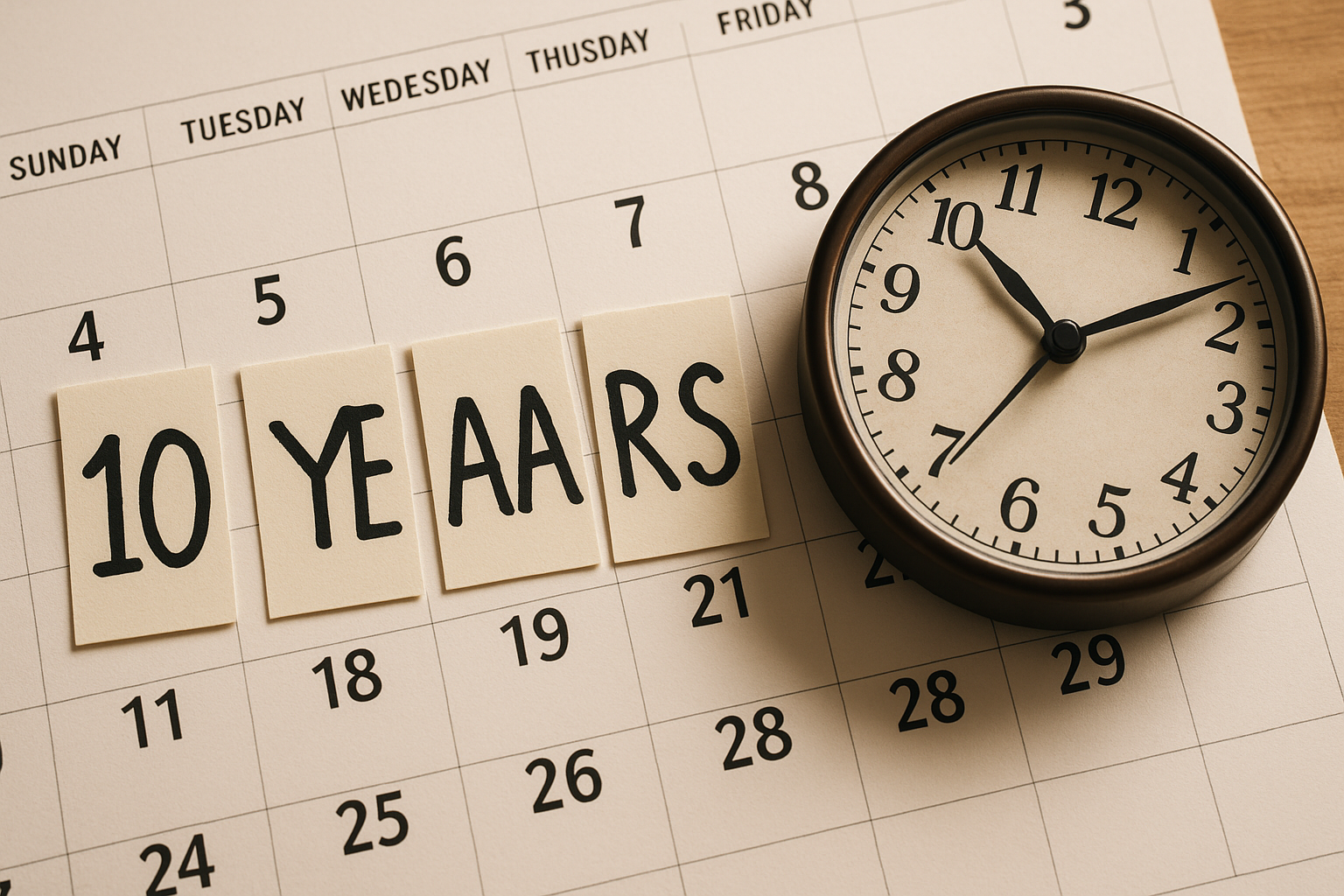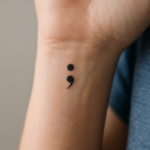When people ask, how long is a decade, the answer seems obvious—ten years. Yet, the question often lingers in our minds because time, while measurable, also feels deeply personal. A decade is more than a block of ten years on a calendar. It represents a stretch of growth, change, and milestones—both in our lives and in the world around us.
Curiosity about what a decade truly means often appears when people reflect on their past or plan for their future. They might think about the decade they were born in, the music that shaped their teenage years, or how much has changed from one decade to the next.
In this article, we’ll break down the meaning of a decade, explore its origins, see how societies use decades to frame history, and discuss why those ten years carry so much weight in our daily lives and collective memory.
The Definition of a Decade — More Than Just Ten Years
So, how long is a decade in the simplest terms? A decade equals ten consecutive years. The word comes from the Greek dekas, meaning “a group of ten.” The decimal system we use for counting and measuring owes its roots to the same concept—ten as a natural unit of measurement, thanks to the ten fingers humans count with.
The word “decade” first appeared in English in the late 16th century, and since then, it’s been a convenient way to describe a time span that’s long enough for noticeable change but short enough for people to remember. We use decades to categorize history, predict trends, and mark personal achievements.
A decade fits smoothly into our way of organizing time. Our calendars follow repeating patterns of tens, hundreds, and thousands—years, centuries, and millennia. Through this lens, calling a ten-year period a “decade” aligns naturally with how we think about duration and progress. It has become a universal time frame—something most people, regardless of background, can relate to easily.
How We Use Decades to Understand History and Change?
When we talk about the 1990s, the 1980s, or the 2000s, we’re not just naming years. We’re describing entire eras in culture, politics, fashion, and technology. Society uses decades as narrative chapters that help us organize and understand history.
For instance, the 1960s often bring to mind social movements, colorful clothing, and rock music. The 1980s remind people of neon lights, early computers, and the birth of cable television. The 2010s might make us think of smartphones, social media, and a digital revolution that reshaped how we communicate.
Decades give us reference points. They help historians, sociologists, and everyday people make sense of the flow of time. Talking in decades is much easier than referring to random stretches of years. Saying “in the last decade” immediately sets the scene for reflection and context.
Culturally, we measure growth and change in decades because that time span is just enough to see transformation—whether it’s in how music sounds, what fashion looks like, or how technology evolves. It also shapes generational identity: people who grew up in the same decade often share similar experiences and memories, creating natural bonds between them.
Counting a Decade: When Does It Start and End?
Although we know a decade equals ten years, people sometimes disagree on how to count it. This is where a simple question like how long is a decade becomes surprisingly interesting.
Some believe decades begin with years ending in 0 and end with years ending in 9. For example, 1990–1999 would be considered the 1990s. This approach matches how we commonly refer to time in conversation—the “nineties” or “twenties.”
Others argue that, because our calendar starts at year 1 (not year 0), each decade should technically begin with a year ending in 1 and finish with a year ending in 0. By that logic, the first decade ran from year 1 to year 10, meaning the most recent decade would be 2011–2020.
Ultimately, most people follow the cultural habit rather than the strict mathematical method. Either way, both interpretations measure ten-year periods—they just start counting from different points. What matters isn’t which is “more correct,” but how the shared understanding helps us make sense of time’s rhythm and flow.
The Significance of a Decade in Everyday Life
For many of us, a decade becomes a chapter marker in our personal stories. Ten years can hold an incredible amount of change: new jobs, relationships, children, achievements, or even complete reinventions. Thinking about how long is a decade reminds us that while ten years may pass quietly, it often transforms nearly every aspect of our lives.
In professional terms, companies often measure growth in decades. Ten years might mark a firm’s stability, earning it credibility in its industry. In relationships or careers, the “ten-year mark” often represents a milestone worth celebrating. The same applies to education, health goals, or financial planning—seeing progress through ten-year intervals helps keep perspective over longer stretches of time.
Emotionally, reflecting on “the past decade” carries weight. It’s a moment of gratitude, nostalgia, or determination for the future. Whether it’s celebrating a decade of friendship or looking back at how technology changed your career, that ten-year measure becomes both personal and profound.
Interesting Facts About Decades Around the World
While the ten-year concept feels universal, how different cultures refer to or count decades varies slightly across languages. Some European languages use similar roots from Greek or Latin for “ten” in their word for decade, while others describe it simply as “a period of ten years.”
Historically, ancient civilizations didn’t always group years in tens the way we do. For example, some used calendars based on lunar cycles or reigns of rulers, meaning their time divisions could be shorter or longer than a decade. The modern concept of neatly packaged ten-year spans reflects human preference for structure and predictability—an elegant way to bring order to time’s endless flow.
Globally, we also see the emotional or symbolic importance of decades. Many cultures celebrate ten-year anniversaries as milestones of endurance and success, whether in marriage, business, or community traditions. The number ten, after all, often symbolizes completion and renewal—a perfect reason to pause and reflect.
Conclusion: Why Ten Years Matter More Than We Realize?
So, how long is a decade? It’s ten years—simple in number but deep in meaning. A decade helps us track history, celebrate life’s milestones, and understand the pace of change across generations. More than a calendar term, it’s a mental measure of progress, patience, and perspective.
Recognizing the significance of a decade reminds us how time shapes both our individual lives and our collective story. Ten years may sound brief when written down, but when lived, it’s a journey full of lessons, milestones, and memories. Perhaps that’s the beauty of a decade—it teaches us that time, even in neat ten-year packages, is both fleeting and extraordinary.
My name is Mustafa, and I have been blogging for over 5 years. I am passionate about sharing complete, accurate, and helpful information with my readers. Along with managing content on The Matcha Read, I also contribute blog posts to premium websites. My goal is to provide valuable insights in a clear and easy-to-understand way, so every reader walks away with useful knowledge.










